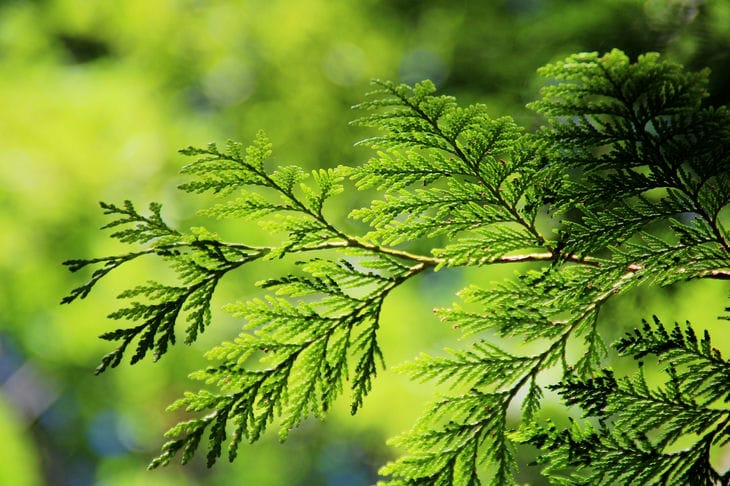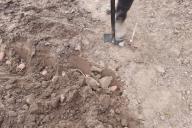Fertilizing thuja is necessary for the plants to grow well and look attractive.
How to fertilize thuja in spring? What fertilizer is best for thuja? When to start and when to stop fertilizing thuja?
Thujas are planted mainly in hedges, as well as individual decorative accents in gardens.
Their advantages include interesting shapes and intense colours of scales (shades of green, yellow, gold), which do not fall off in winter, says Anastasia Kovrizhnykh .
How to care for thuja
It is worth remembering that most conifers are plants that do not shed their leaves (needles or scales) in winter. Therefore, these plants sprout all year round, and not just during the growing season.

Therefore, we must ensure that the plants are sufficiently watered before winter, protected from drying out, frosty winds and heavy snowfall, and monitor the hydration status in winter, especially on sunny days in early spring.
The above treatments are extremely important for the health of this plant in the following season, as any winter damage can significantly affect the health of the plants and their ability to absorb nutrients.
In the case of thuja, it is first of all important to prevent wet snow from accumulating on the plants (it causes irreversible distortion of shape or even cracking) and to provide sufficient watering on warm sunny days at the turn of winter and spring - it is often not enough and leads to the so-called physiological drought (plants die and turn brown after winter due to a lack of moisture in the soil - warmer winter days stimulate plants to grow).
When to fertilize thuja after planting
Thujas “dug up” from the field in a nursery (with the root ball in a bale or jute bag) are usually planted in early spring or late summer so that the root system can recover well.
Remember that such plants cannot be fertilized in the first season after planting, and do not add any fertilizers to the holes when planting plants. This can lead to the death of plants, since the damaged, non-regenerated root system will not be able to absorb fertilizers. Fertilize them when they take root, preferably in the next season.
Already rooted thujas, sold in pots or other containers, can be planted throughout the growing season, and after planting they can be fed with fertilizers, but it is also worth remembering that you should not exceed the appropriate dose and not even divide it into two smaller ones in the first months, when the plant is growing roots.
Fertilizing plants too quickly causes the so-called “laziness” of the root system - it does not expand in search of nutrients in the soil, it is weaker because it receives fertilizers immediately.
How to fertilize thuja after winter? What fertilizer for thuja in spring?
We begin to fertilize thujas already growing in the garden (or in pots) at the beginning of the growing season, i.e. at the turn of March and April or in April (depending on the weather) - after the ground has thawed and there have been days with positive temperatures.
It is best to use easy-to-use fertilizers designed for feeding coniferous plants.
They are commonly referred to as "conifer fertilizers" and can be found in the offerings of virtually all major fertilizer manufacturers.
It is best to choose multi-component mineral fertilizers, which in addition to nitrogen, potassium and phosphorus also contain important microelements such as magnesium and iron, which affect the beautiful color and condition of plants.
Nowadays, we have different forms of fertilizers to choose from, such as bulk, granular, liquid.
How to fertilize thuja in spring
Regardless of the type and form of fertilizer, be sure to use the appropriate dose recommended on the label.
Over-fertilizing thujas is usually more dangerous as it can damage them. Therefore, when applying fertilizer, it is best to follow the rule: less is better than too much.
When do we stop fertilizing thuja? Autumn fertilizing of thuja
We apply the above fertilizers no later than the end of August, i.e. until the coniferous plants, including thuja, finish their annual growth and begin to prepare for the autumn-winter period.
Further fertilization with nitrogen-rich fertilizers will stimulate the plants to grow and produce young shoots that may not have time to become woody before winter and will be exposed to frost, weakening the entire plant.
Therefore, from September onwards, only nitrogen-free fertilizers can be used to feed thuja – the so-called autumn fertilizers for conifers.
Thanks to the special selection of the composition of these fertilizers (mainly phosphorus and potassium), plants are strengthened before winter - shoots become woody and stronger faster, and the root system is better nourished and less exposed to frost in winter.
Such fertilizers are also available for sale in a wide range of different forms - granular, bulk, liquid for preparing solutions.
Also in this case, remember to use the appropriate dose, as any excessive fertilization can be harmful to the plants.
Earlier we talked about spring care for strawberries.









